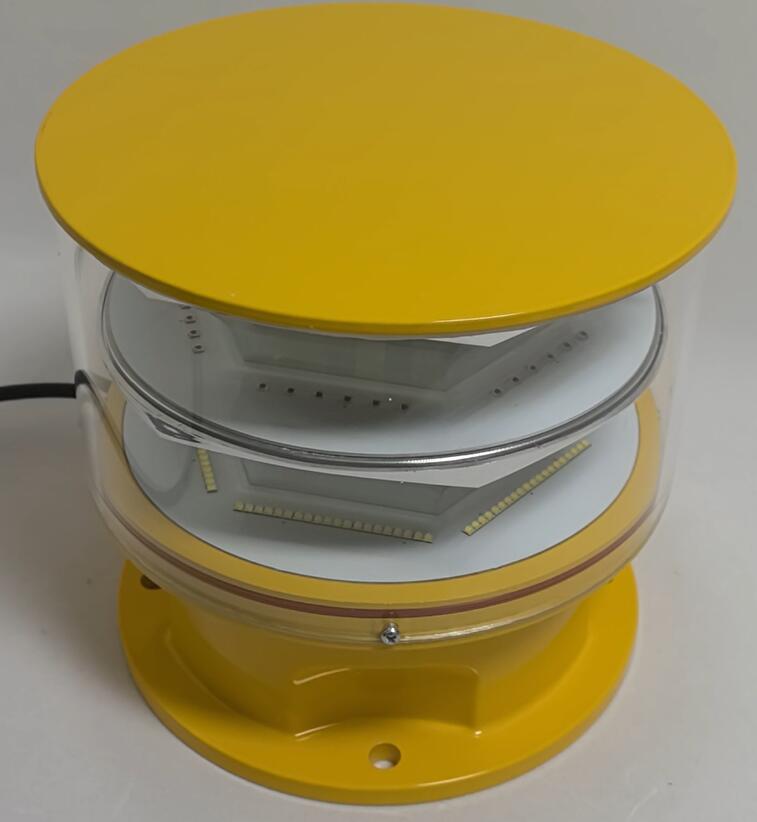Navigating Safely with LED Obstruction Light Technology
An LED obstruction light is a critical safety device designed to ensure visibility and alertness in various industries. From aviation to marine and construction, these lights serve as visual markers, warning of potential hazards or obstructions. Their energy efficiency, durability, and reliability make them a preferred choice for professionals worldwide. This article examines the key features, applications, and benefits of LED obstruction lights, along with the evolving technologies shaping their future.
What is an LED Obstruction Light?
An LED obstruction light is a high-intensity warning light that uses light-emitting diode (LED) technology to provide illumination. These lights are commonly installed on structures such as towers, buildings, cranes, wind turbines, and offshore platforms to indicate their presence and prevent accidents.
Key characteristics include:

Energy Efficiency:
LED technology consumes less energy compared to traditional lighting systems, reducing operational costs.
Long Lifespan:
LEDs have a longer operational life, often exceeding 50,000 hours, minimizing the need for frequent replacements.
| LED Obstruction Light | LED Obstruction Lights |
Durability:
Built to withstand harsh environments, LED obstruction lights are resistant to extreme temperatures, UV exposure, and corrosion.
High Visibility:
These lights offer bright, consistent illumination visible from long distances, even in adverse weather conditions.
Low Maintenance:
With no filament or fragile parts, LED obstruction lights require minimal upkeep, making them highly reliable.
Applications of LED Obstruction Lights
LED obstruction lights play a vital role in a variety of industries and scenarios:
Aviation:
Installed on communication towers, skyscrapers, and airport infrastructure, these lights warn aircraft pilots of tall structures, ensuring flight safety.
Marine:
LED obstruction lights mark navigational hazards, such as buoys, offshore platforms, and docks, enhancing maritime safety.
Wind Energy:
Wind turbines equipped with LED obstruction lights ensure visibility, preventing collisions with aircraft and drones.
Telecommunications:
Towers and antennas use these lights to signal their presence to nearby aviation and vehicular traffic.
Construction:
Cranes and construction sites utilize LED obstruction lights to alert workers and nearby traffic of potential risks.
Industrial Sites:
Factories and chemical plants employ these lights to enhance visibility and safety in critical areas.
Benefits of LED Obstruction Lights
The advantages of LED obstruction lights extend beyond safety, offering practical and economic benefits:
Energy Savings:
LEDs use significantly less energy than traditional incandescent or halogen lights, reducing electricity consumption.
Environmental Impact:
Lower energy use translates to reduced greenhouse gas emissions, making LED obstruction lights an eco-friendly choice.
Reduced Maintenance Costs:
The longevity and reliability of LEDs result in fewer replacements and lower maintenance expenses.
Enhanced Safety:
Bright, dependable illumination ensures that structures remain visible at all times, reducing the risk of accidents.
Customizable Options:
Available in various colors, intensities, and configurations, LED obstruction lights can be tailored to meet specific regulatory requirements and operational needs.
Features to Consider When Choosing an LED Obstruction Light
Selecting the right LED obstruction light involves evaluating several key factors:
Compliance:
Ensure the light meets relevant industry standards, such as FAA, ICAO, or local regulatory requirements.
Brightness Levels:
Choose a light with the appropriate intensity for the application—low-intensity for shorter structures and high-intensity for taller installations.
Durability:
Opt for corrosion-resistant, weatherproof materials to ensure long-lasting performance in harsh environments.
Power Source:
LED obstruction lights can be powered by solar panels, batteries, or grid electricity. Consider the most suitable option based on location and accessibility.
Mounting Flexibility:
Look for lights with adaptable mounting options to accommodate various structures and surfaces.
Challenges and Innovations
While LED obstruction lights offer numerous benefits, they also face certain challenges:
Initial Cost:
The upfront cost of LED obstruction lights can be higher than traditional lighting. However, the long-term savings on energy and maintenance justify the investment.
Vulnerability to Vandalism:
In some areas, obstruction lights may be at risk of theft or damage. Manufacturers are addressing this with tamper-proof designs and robust materials.
Extreme Weather Conditions:
Advancements in materials and coatings ensure these lights remain functional in extreme climates, from freezing temperatures to high humidity.
The Future of LED Obstruction Lights
The evolution of LED technology continues to enhance the functionality of obstruction lights. Innovations include:
Smart Connectivity:
IoT-enabled LED obstruction lights can provide real-time monitoring and diagnostics, improving maintenance efficiency.
Solar Integration:
Solar-powered LED obstruction lights are gaining popularity for their independence from grid power and suitability for remote locations.
Adaptive Lighting:
Some models now feature adjustable brightness levels based on ambient light conditions, reducing energy consumption while maintaining visibility.
Enhanced Longevity:
Advances in LED materials and designs are further extending the lifespan of obstruction lights, offering greater reliability.
LED obstruction lights are an essential component of modern safety systems, providing reliable, efficient illumination across a wide range of industries. Their energy efficiency, durability, and adaptability make them a superior choice for ensuring visibility and preventing accidents. As technology continues to advance, LED obstruction lights will play an even greater role in promoting safety and sustainability in the years to come.
